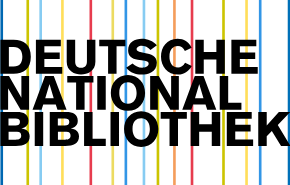MODERN METHODOLOGICAL FOUNDATIONS FOR ASSESSING THE IMPACT OF THE LAND CADASTRE ON INVESTMENT PROCESSES
DOI:
https://doi.org/10.55640/Keywords:
land cadastre, investment, evaluation, methodology, geoinformation, cadastre system, land resources, legal framework, investment climate, analysis.Abstract
This article explores the impact of land cadastre on investment processes and modern methodological approaches to its assessment. The role of the cadastre system as a key factor in investment activity is analyzed. Reliable data on land resources is considered a crucial element for investors. The study is based on advanced international practices. The article proposes ways to improve the investment climate through land cadastre systems.
References
1. Dale, P.F. & McLaughlin, J.D. (2005). Land Administration. Oxford University Press.
2. Deininger, K. & Feder, G. (2001). Land Institutions and Land Markets. Handbook of Agricultural Economics.
3. FAO. (2010). Land Tenure Manual. Food and Agriculture Organization of the United Nations.
4. Zevenbergen, J., Bennett, R., & Lengoiboni, M. (2013). Designing Land Administration Systems.
5. Williamson, I. et al. (2010). Land Administration for Sustainable Development.
6. Kaufmann, D. & Kraay, A. (2002). Governance Indicators and Investment Climate.
7. Kalantari, M., Rajabifard, A., & Williamson, I. (2008). Spatially Enabled Government.
8. Enemark, S. (2004). Building Land Information Policies.
9. FIG Report (2020). The Role of Land Information Systems in Investment.
10. OECD (2018). Policy Framework for Investment.
11. World Bank (2020). Doing Business Indicators.
12. Xitoy Yer Resurslari Vazirligi (2017). Smart Land Cadastre Practices.
13. Turkiya Kadastr Boshqarmasi (2021). Geoportal Services and Investment.
14. O‘zbekiston Respublikasi Kadastr agentligi hisobotlari (2023).
15. Qodirov, A. (2022). Yer kadastr tizimining investitsiyaviy rivojlanishdagi o‘rni. – “Geodeziya va Kadastr” ilmiy jurnali.
Downloads
Published
Issue
Section
License

This work is licensed under a Creative Commons Attribution 4.0 International License.
Authors retain the copyright of their manuscripts, and all Open Access articles are disseminated under the terms of the Creative Commons Attribution License 4.0 (CC-BY), which licenses unrestricted use, distribution, and reproduction in any medium, provided that the original work is appropriately cited. The use of general descriptive names, trade names, trademarks, and so forth in this publication, even if not specifically identified, does not imply that these names are not protected by the relevant laws and regulations.







